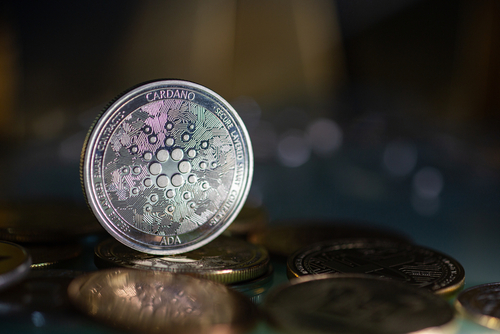
Summary
- Cardano is one of the biggest cryptocurrencies by market cap.
- Cardano’s goal is to be the most environmentally sustainable blockchain platform.
- Cardano native assets can be created and distributed on the blockchain and are able to interact with smart contracts.
- A version of this article first appeared on Coinbase. Read more Crypto Council explainers.
Cardano is one of the biggest cryptocurrencies by market cap. It’s designed to be a next-gen evolution of the Ethereum idea — with a blockchain that’s a flexible, sustainable, and scalable platform for running smart contracts, which will allow the development of a wide range of decentralized finance apps, new crypto tokens, games, and more.
As of March 2021, however, smart-contract functionality has yet to be rolled out by developers. An upgrade scheduled for the second quarter of 2021 will unlock smart-contract features, bringing Cardano one step closer to its goal of providing developers with a blockchain platformthat is robust, secure, scalable, and highly energy-efficient.
Much like the Ethereum blockchain’s native cryptocurrency is ETH, the Cardano blockchain’s native cryptocurrency is ADA — which can be bought or sold via exchanges like Coinbase. Today, ADA can be used to store value (perhaps as part of your investment portfolio), to send and receive payments, and for staking and paying transaction fees on the Cardano network.
How does Cardano work?
Cardano’s goal is to be the most environmentally sustainable blockchain platform. It uses a unique proof-of-stake consensus mechanism called Ouroboros, as opposed to the energy-intensive proof-of-work system currently used by Bitcoin and Ethereum. (Ethereum is also moving to a proof-of-stake system via the ETH2 upgrade).
What is proof of work? Decentralized cryptocurrency networks need to make sure that nobody spends the same money twice without a central authority like Visa or PayPal in the middle. To accomplish this they use a “consensus mechanism.” The original crypto consensus mechanism is called proof of work, first popularized by Bitcoin mining.
- Proof of work requires a huge amount of processing power, which is contributed by virtual “miners” around the world competing to be the first to solve a time-consuming math puzzle.
- The winner gets to update the blockchain with the latest verified transactions, and is rewarded with a predetermined amount of crypto.
What is proof of stake? Rather than using a network of miners racing to solve a puzzle, proof of stake uses a network of invested participants called validators. Instead of contributing processing power to secure the network and verify transactions as miners do, validators stake their own ADA.
- The network selects a winner based on the amount of ADA each validator has in the pool and the length of time they’ve had it there — literally rewarding the most invested participants.
- Once the winner has validated the latest block of transactions, other validators can attest that the block is accurate. When a threshold number of attestations have been made, the network updates the blockchain.
- All participating validators receive a reward in ADA, which is distributed by the network in proportion to each validator’s stake.
- Becoming a validator is a major responsibility, but interested parties can also earn ADA rewards by “delegating” some of their crypto to a staking pool run by someone else.
The Cardano blockchain is also divided into two separate layers: the Cardano Settlement Layer (CSL) and the Cardano Computing Layer (CCL). The CSL contains the ledger of accounts and balances (and is where the transactions are validated by the Ouroboros consensus mechanism). The CCL layer is where all the computations for apps running on the blockchain are executed — via the operations of smart contracts.
The idea of splitting the blockchain into two layers is to help the Cardano network to process as many as a million transactions a second.
What are Cardano native tokens?
On March 1, 2021, the Cardano blockchain introduced the ability to create native tokens. Like Ethereum tokens — which can include things like NFTs or stablecoins like USD Coin — Cardano native assets can be created and distributed on the blockchain and are able to interact with smart contracts.
But unlike Ethereum-based tokens, Cardano native tokens aren’t created via smart contract. Instead, they run on the same architecture as the ADA cryptocurrency itself. According to the nonprofit Cardano Foundation, this makes Cardano native assets “first-class citizens” on the blockchain. Their native architecture can theoretically make these tokens more secure and reduce the fees associated with transactions.
A brief history of Cardano
Cardano was launched in September 2017 by Ethereum co-founder Charles Hoskinson, and aims to be a third-generation blockchain (or blockchain 3.0) project — building on top of the technology pioneered by Bitcoin (first gen) and Ethereum (second gen). Cardano’s goal is to be a highly scalable and energy-efficient smart contract platform.
The Ouroboros consensus mechanism is based on peer-reviewed research by a team of computer scientists and cryptographers from the University of Edinburgh, Tokyo University, and other institutions. Their goal was to build a decentralized network that could validate transactions in a scalable, secure way — while ensuring that the Cardano platform would be as energy-efficient as possible.
What is ADA?
ADA is the native cryptocurrency of the Cardano platform (named after Ada Lovelace, the 19th-century mathematician often referred to as the “world’s first computer programmer”).
ADA tokens fuel the Cardano platform much like ETH tokens fuel the Ethereum platform. They’re used to pay transaction fees and are staked by validators (and delegators) who want to help maintain security and stability of the network in exchange for earning rewards.
In the future, ADA will also be used as a governance token, which will allow holders to vote on changes and upgrades to the Cardano platform.
What’s next for Cardano?
In the second quarter of 2021, smart contract functionality is scheduled to arrive on the Cardano platform. Developers have also announced that the blockchain will become compatible with Ethereum-based smart contracts later in the year — potentially allowing it to run a wide range of existing apps and allowing developers to work on Cardano projects using the familiar Solidity programming language.
Cardano also plans to become completely decentralized through the implementation of community-driven governance and an automated treasury system to fund the future of the network.
Need more Explainers?
Check out the Crypto Council’s resources for all your explainer needs. More content added regularly.




